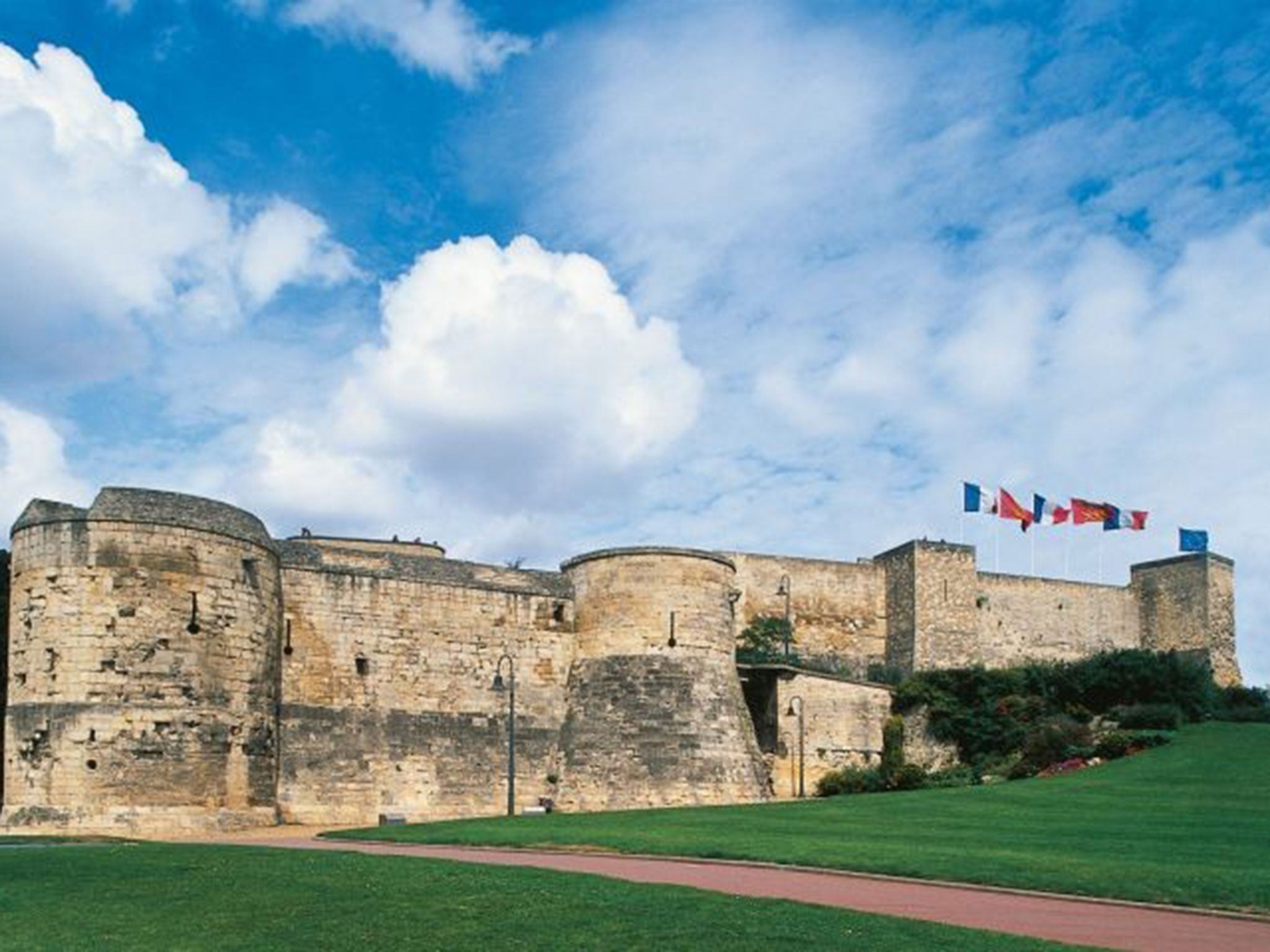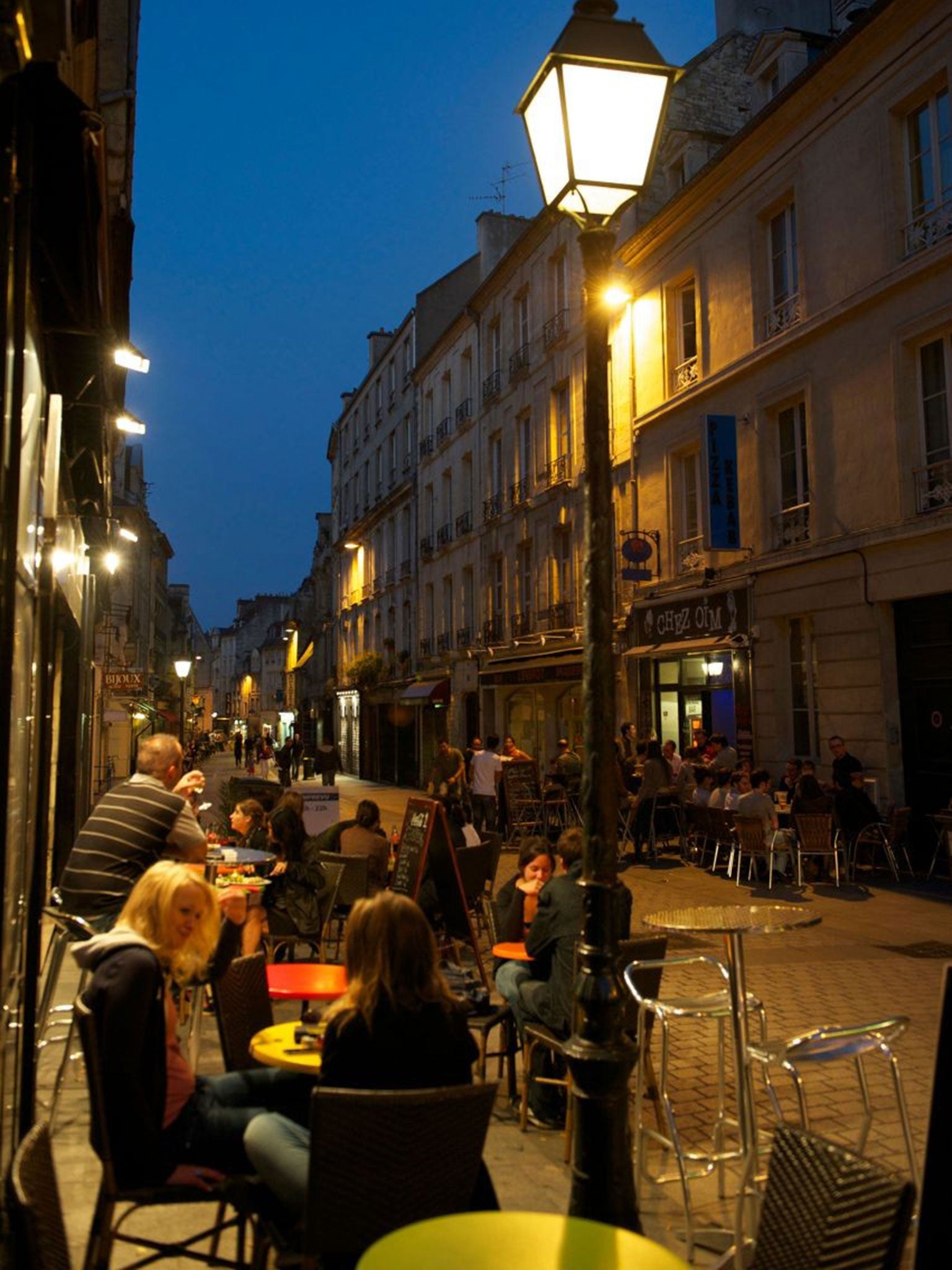Normandy: A brand new landing proves it’s more than just a ferry port
Direct flights now link this historic city with the UK, proving that it’s more than just a ferry port, as Chris Leadbeater found

Your support helps us to tell the story
From reproductive rights to climate change to Big Tech, The Independent is on the ground when the story is developing. Whether it's investigating the financials of Elon Musk's pro-Trump PAC or producing our latest documentary, 'The A Word', which shines a light on the American women fighting for reproductive rights, we know how important it is to parse out the facts from the messaging.
At such a critical moment in US history, we need reporters on the ground. Your donation allows us to keep sending journalists to speak to both sides of the story.
The Independent is trusted by Americans across the entire political spectrum. And unlike many other quality news outlets, we choose not to lock Americans out of our reporting and analysis with paywalls. We believe quality journalism should be available to everyone, paid for by those who can afford it.
Your support makes all the difference.Towards the north-east end of the pedestrianised Rue Saint-Pierre, two ghosts leap out at me with such force that I stop in my tracks to stare at them. There they are at No 54 – twin timber-fronted houses, blatantly flaunting their heritage on Caen’s commercial drag. Even with everyday shops slotted into their ground floors (a pharmacy, a clothes store), their 16th-century authenticity – skillfully carved wood and overhanging eaves – is clear.
The main reason for their visibility is the starkness of the contrast with the neighbouring buildings – perfectly pleasant but entirely undramatic offshoots of the mid-20th century. To say that the wounds of war are obvious in Caen is to understate the situation. Scar tissue dominates the torso of this once-medieval citadel – which was almost destroyed by the military muscle that, famously, was required to grasp it from German hands in 1944.
The historic capital of Normandy is, of course, back in international focus this year – the 70th anniversary of the D-Day invasion, which took place on its fringes and lured princes and presidents to its door in June. And those keen to recall the Second World War can find much to view around the city – the three easternmost landing beaches (Sword, Juno and Gold) ebbing west of the port district of Ouistreham for 20 miles; the Memorial de Caen museum (Esplanade General Eisenhower; 00 33 2 3106 0644; memorial-caen.fr; €19) dissecting the causes and carnage of the conflict in the northern suburbs.
But there is another story to be told in Caen, one that peers back further than 70 years. This, after all, is a place that has crowned the map of Normandy for more than a millennium, rising to 11th-century prominence as the base of William the Conqueror – a man whose shooting star made Caen, for a while, one of the key cities of Europe. Echoes of this era remain, some of them miraculously spared by the firestorm of 1944, some of them repaired in its wake – alongside a host of bars and cafés that buzz with happy noise.
All of this, as of July, is more accessible. Many visitors see Caen as a ferry terminal and a gateway to areas of France further south. But the launch of a flight between Britain and the city’s Carpiquet airport (Flybe, operating four times a week from Southend) means that a city long a part of UK folklore is now just a quick 50-minute air-hop away.

Unpack
There is a distinct silence to the reception area when I check in at Hotel Le Dauphin (29 Rue Gemare; 00 33 2 3186 2226; le-dauphin- normandie.com). Appropriate, really, because this four-star retreat, within longbow range of the château, is injected into what remains of a medieval priory. This equates to thick limestone walls and a room where a monastic arch, fitted into the modern décor, talks of prayer and piety. The 21st century intrudes, however, in the spa, with its gym, pool and sauna. Double rooms from €150 (£120), including breakfast.
Think local
For those keen to delve deeper into the city’s back-story, the local tourist office runs guided tours of the Centre Historique from its base on Place Saint-Pierre (00 33 2 3127 1414; caen- tourisme.fr; Tuesday to Saturday 4pm, until 6 Sept; €6/£4.80). This 90-minute jaunt takes in landmarks such as the Hôtel d’Escoville, a 16th-century Renaissance mansion which had to be restored after the war – and the 13th-century church of Saint-Pierre, which lost its spire to a bomb, but has since regained its full majesty.
Eat
Le Carlotta, on the edge of Caen’s little marina (16 Quai Vendeuvre; 00 33 2 3186 6899; lecarlotta.fr), is the sort of restaurant which makes claims that French cuisine has lost its way seem ridiculous. Its walls come adorned with bright Art Deco mosaics – and the food is barely less colourful, the €30.50 (£24) menu featuring ox entrecote in béarnaise sauce. Alternatively, head to Rue du Vaugueux, a splendid pocket of eateries which sits in the shadow of the castle. Here, Le P’tit B (15 Rue du Vaugueux; 00 33 2 3193 5076; leptitb.fr) is delightfully inventive, serving salmon with banana and passion fruit on its €29 (£23) menu.
Drink
While the church of the same name at its eastern end is still lacking a roof thanks to an Allied bomb, the Place Saint-Sauveur is a survivor, its 18th-century elegance having made it through the summer of ’44. This is a lovely spot for an early evening tipple – perhaps at Au Vélocipède (21 Place Saint- Sauveur; 00 33 2 3185 7434), where locals nurse glasses of wine (from €3/£2.40) at tables on the cobbles. The adjacent Rue Ecuyère is a lively nest of merriment, lined with unfussy drinkeries – such as Bar Le 23 (23 Rue Ecuyère; 00 33 2 3185 2323), where bottles of beer start at €2 (£1.60).
Spend
A sense of yesteryear comes to the fore on the narrow alley of Rue Froide – “cold”, apparently, because of the way its tall, antique townhouses block out direct sunlight, more than any icy welcome from its shopkeepers. So it proves at Piment, Poivre & Compagnie (24 Rue Froide; 00 33 2 3123 2764; piment -poivre-etcie.com) – a delicatessen dealing in olive oils, coffee and spicy sauces. La Boîte à Calva (8 Rue Froide; 00 33 2 3196 8824; laboitea calva.fr), meanwhile, dispenses that grand staple of Normandy, apple-related alcohol – selling both inexpensive ciders (from €8/£6.40) and vintage bottles of fine calvados.
Don’t miss
The Château de Caen (chateau.caen.fr) has been the centrepoint of the city since William the Conqueror built it in circa 1060. Its ramparts shelter two museums. The Musée des Beaux-Arts (00 33 2 3130 4770; mba.caen.fr; daily except Tuesday, 9.30am-6pm; from €3.10/£2.50) plays host to a wealth of art from the 15th century onwards. The Musée de Normandie (0033 2 3130 4760; musee-de- normandie.eu; daily 9.30am-6pm; €5.20/£4.15) looks at the history of the region in loving detail.
Getting there
Flybe (0371 700 2000; flybe.com) serves Caen-Carpiquet airport four times a week from Southend.
More information: caen-tourisme.fr, normandie-tourisme.fr, uk.rendezvousenfrance.com
Join our commenting forum
Join thought-provoking conversations, follow other Independent readers and see their replies
Comments